Lying on the north-west coast of Lewis in the Outer Hebrides are the Calanais Standing Stones (Callanish in its anglicised form), an astonishing cruciform-shaped arrangement of stones erected over 5,000 years ago.
This walk links two smaller, lesser-known stone circles and ends at the imposing megaliths, which stand on the brow of a windswept hill. The stones are thought to connect heaven and earth, and the experience is even more ethereal at sunrise or sunset on a wild winter’s day.
- Scottish islands guide: best to visit and how to get there
- Scotland’s best walks
- Best islands to visit in the UK
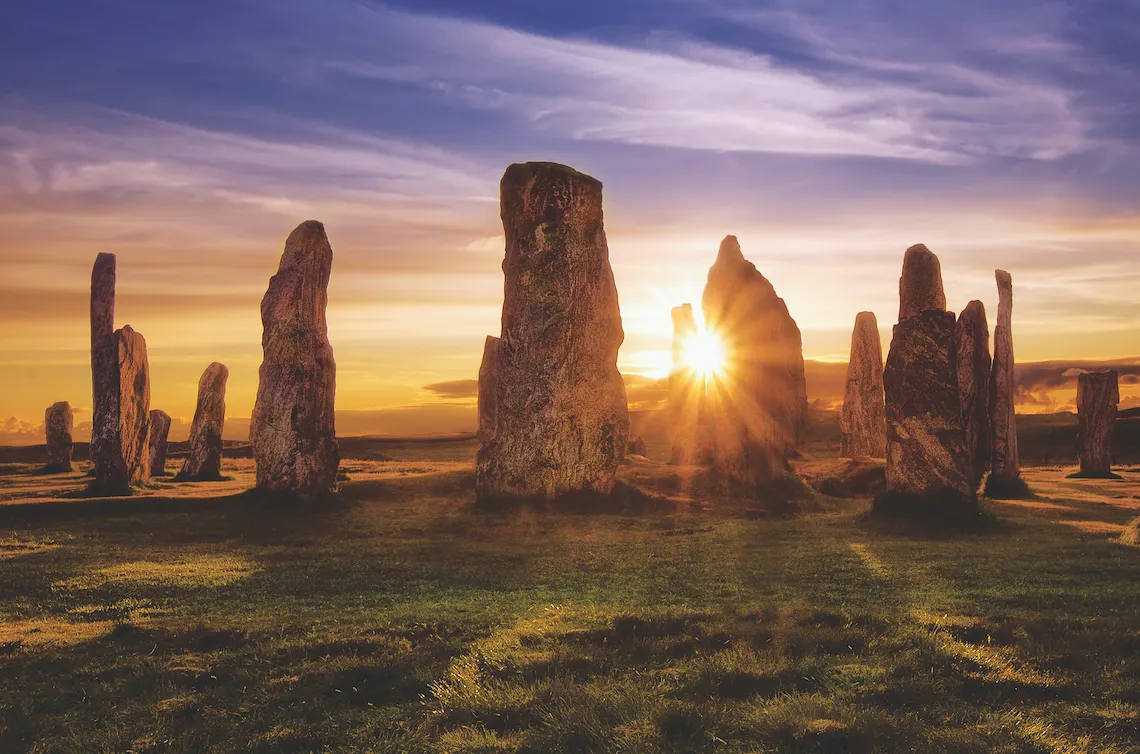
Calanais Standing Stones walk
2.4 miles/3.9km | 2 hours | easy | 50m ascent
1. Start
From the visitor centre car park, bear left onto the road. At the T-junction, turn right, eventually joining the A858.
On the right-hand side at ¾ mile is a lane signposted ‘Calanais II’. Go right here and continue to the end of the track, where you pass through a gate. Cross a muddy field and climb over a stile to the stone circle.
- Winter solstice: when is the shortest day of the year?
- Summer solstice: when is the longest day of the year?
2. Calanais II
Close to the waters of Loch Ròg stands Calanais II, Cnoc Ceann a’ Ghàrraidh in Gaelic. Originally consisting of 10 stones in an oval-shaped ring, only a few now remain. The cairn in the centre is thought to be a burial chamber.
After lingering to take in these relics, turn left and head east. Walk ¼ mile towards Calanais III, using the boardwalk to traverse the worst of the boggy ground. Pass through a gate, then gently climb up to the ridge to reach the stones.
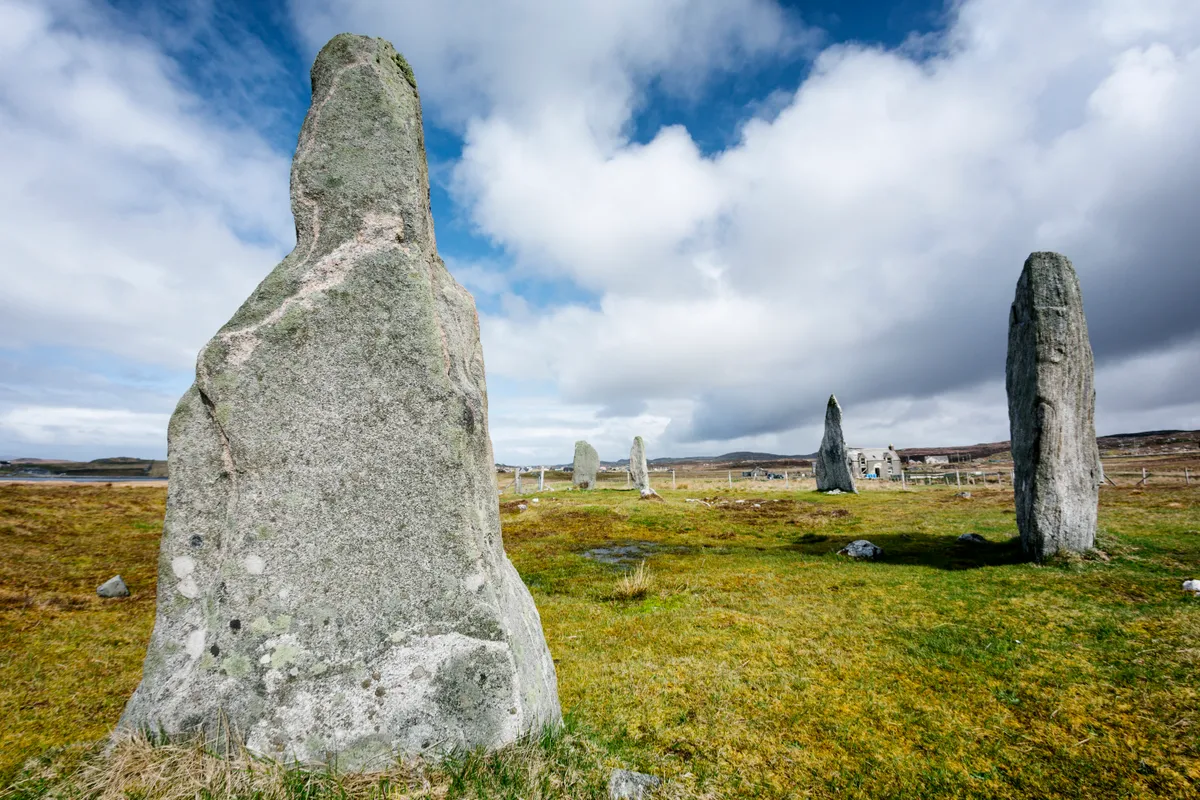
3. Calanais III
At the summit of Cnoc Fillibhir Bheag, Calanais III consists of two concentric circles. It is suggested the inner circle is dedicated to the Triple Celtic Goddess, symbolising the three stages of a woman’s life – the maid, the mother and the ‘crone’. The fourth stone represents their male consort.
The hills in the distance resemble a reclining woman, and are known locally as Cailleach na Mòinteach, or the Old Woman of the Moors.
Continue along the track, go through a gate and turn left along the main road. Where the road forks, climb the hill on the right, entering the gate at the far end of Calanais I.
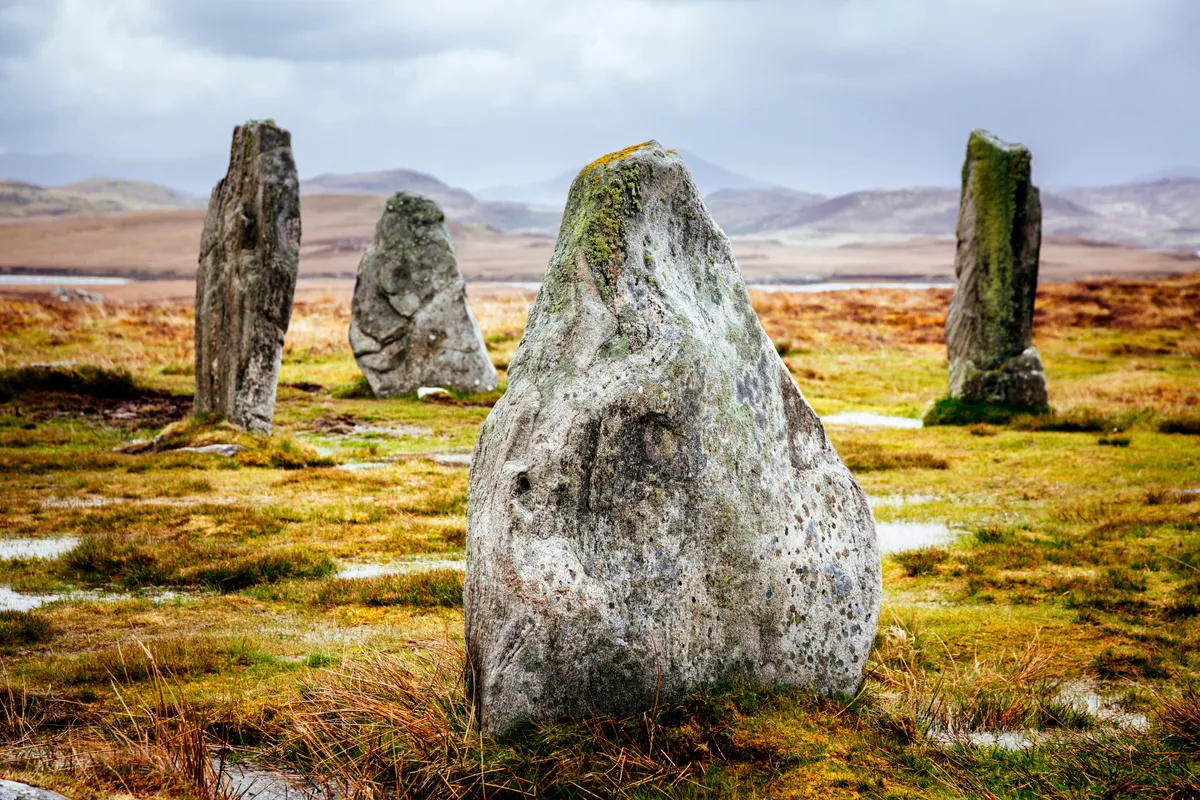
4. Calanais I
Calanais I is believed to be a celestial calendar. The central stone circle marks the position of the midwinter sun, and stones radiate outwards to form a Celtic cross, oriented to the moon. Every 18.6 years, during a phenomenon known as a ‘lunar standstill’, moonbeams light up the main avenue. These ancient pillars have inspired legend and lore. If you are lucky, on midsummer’s morning, you may glimpse the ‘Shining One’, heralded by the bird of the Celtic Otherworld, the cuckoo. Take time to wander around this awe-inspiring site.
Return to the visitor centre for well-deserved refreshments.
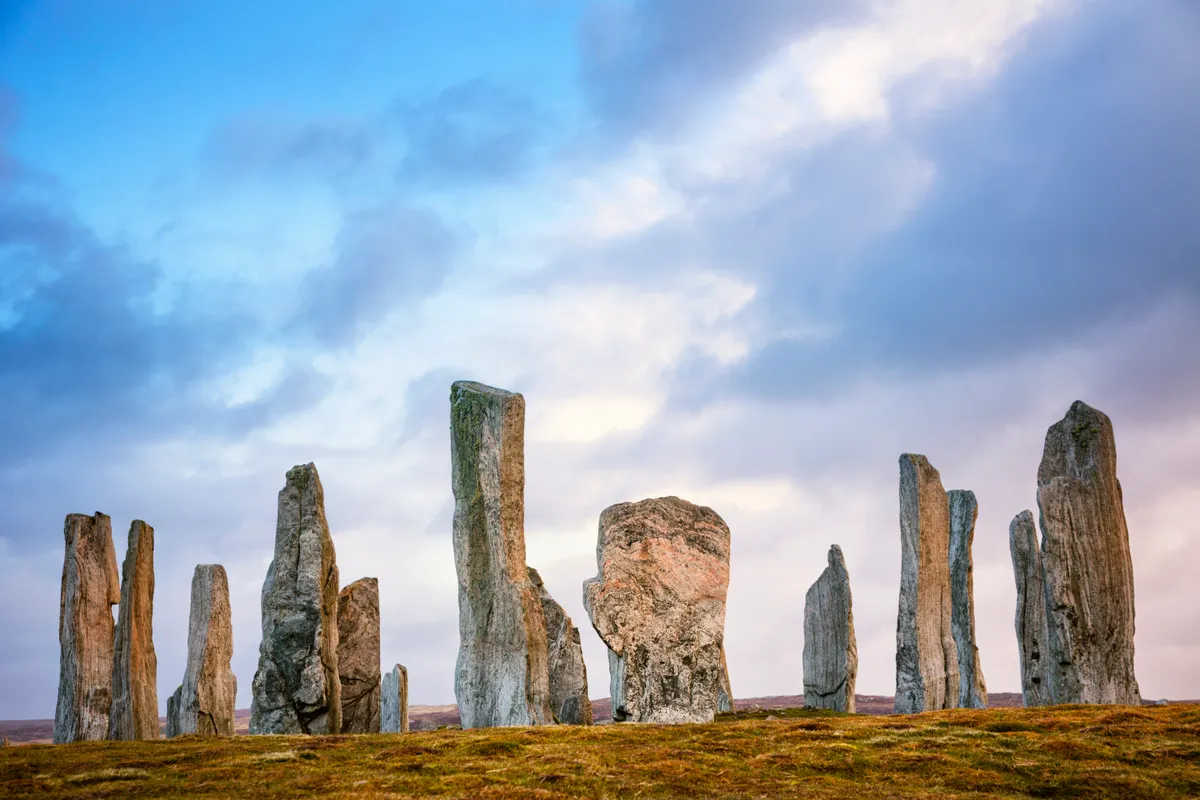
Calanais Standing Stones map
Calanais Standing Stones walking route and map
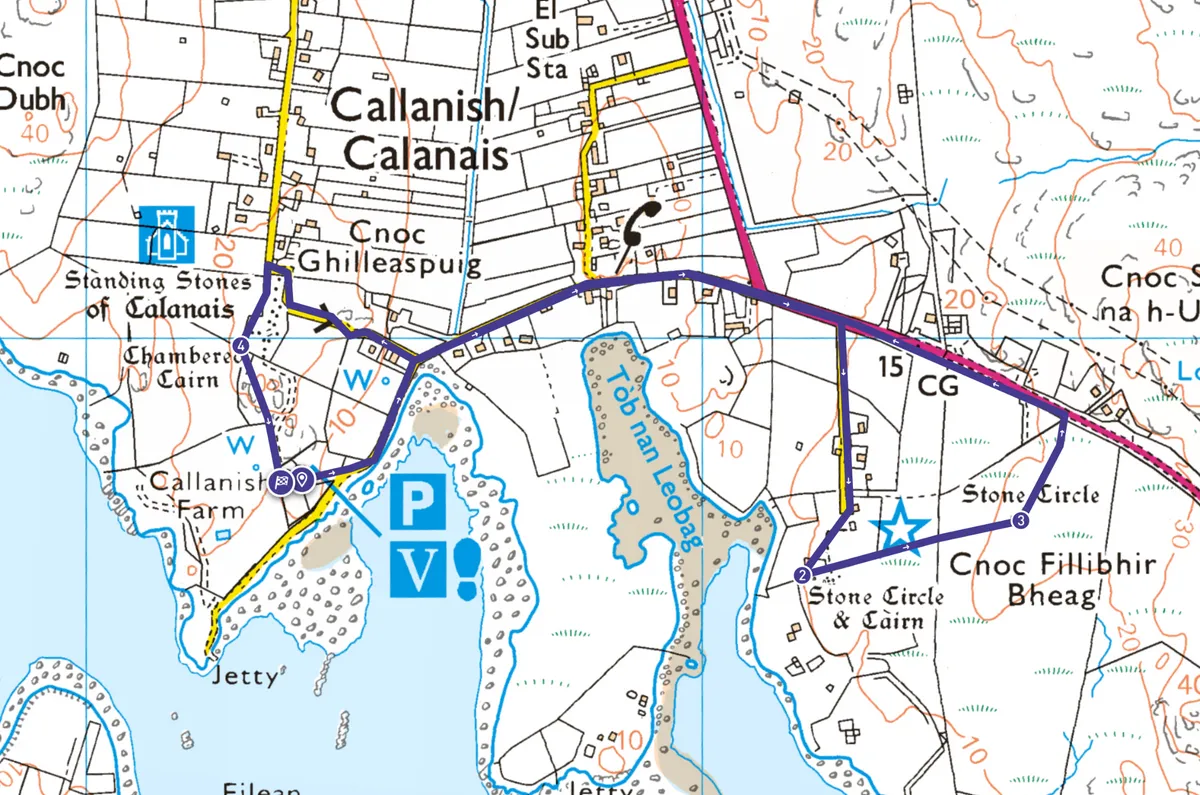
Useful information
Starting point
There is free parking at the Calanais Visitor Centre (HS2 9DY). The infrequent W2 bus service operates Monday-Saturday between Stornoway and the Stones.
Terrain
There is a tarmac path around Calanais I. However, the approaches to Calanais II & III are boggy, so these sections are unsuitable for pushchairs and wheelchair users.
Map
OS Explorer 459
Eat/drink
The café in the visitor centre is open Wednesday to Saturday from 10am to 4pm during the winter.
Stay
Ardroil campsite on the west coast has basic facilities and is open all year round. For a little more luxury, Uig Sands Rooms offers self-catering accommodation.
